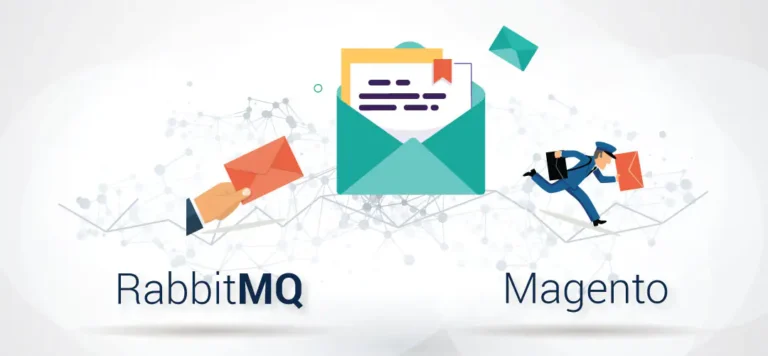In the world of e-commerce, speed and efficiency are crucial for success. As online businesses grow, so does the need for reliable communication between different components of a system. This is where RabbitMQ comes into play. In this article, we will delve into RabbitMQ for Magento 2, exploring what it is, how it works, and how you can utilize it to optimize your Magento store’s performance.
What is RabbitMQ in Magento 2?
RabbitMQ is an open-source message broker software that facilitates communication between various components of an application. It enables asynchronous messaging, allowing different parts of a system to send and receive messages without being directly connected. This decoupling is essential for maintaining system efficiency and performance, especially in complex e-commerce environments like Magento 2.
In the context of Magento 2, RabbitMQ serves as a queue management tool that helps handle tasks such as order processing, inventory management, and customer notifications. By implementing RabbitMQ, Magento can offload tasks to be processed in the background, ensuring that the front-end experience remains fast and responsive.
Key Features of RabbitMQ
- Asynchronous Processing: RabbitMQ allows tasks to be processed independently of the main application flow. This means that while the server processes background tasks, the user can continue interacting with the website without delays.
- Scalability: As your business grows, RabbitMQ can handle increased loads by distributing tasks across multiple workers. This ensures that your Magento store can efficiently manage higher traffic volumes during peak times.
- Reliability: RabbitMQ guarantees message delivery, ensuring that tasks are completed even if there are temporary failures in the system. This is particularly important for e-commerce platforms where transactions must be processed accurately.
- Flexible Routing: RabbitMQ offers various routing capabilities that allow messages to be directed to specific consumers based on their characteristics, enhancing the overall efficiency of your system.
How to Use RabbitMQ in Magento 2Step 1: Install RabbitMQ
To use RabbitMQ with Magento 2, you first need to install RabbitMQ on your server. You can download it from the official RabbitMQ website and follow the installation instructions for your operating system.
For a typical installation on a Linux server, you might use package managers like apt or yum. Once installed, ensure the RabbitMQ service is running with the following command:
bash
sudo systemctl start rabbitmq-server
Step 2: Configure RabbitMQ
After installation, you need to configure RabbitMQ for Magento. The configuration file is usually located in /etc/rabbitmq/rabbitmq.conf. Ensure that the necessary permissions and settings are in place. For Magento, you might want to set up a user with specific permissions to access the message queues.
Step 3: Enable RabbitMQ in Magento 2
Magento 2 comes with built-in support for RabbitMQ. You can enable it by modifying the env.php configuration file located in the app/etc/ directory. Add the following configuration to specify RabbitMQ details:
php
‘queue’ => [ ‘amqp’ => [ ‘host’ => ‘localhost’, ‘port’ => ‘5672’, ‘user’ => ‘your_user’, ‘password’ => ‘your_password’, ‘virtualhost’ => ‘/’ ], ],
Replace ‘your_user’ and ‘your_password’ with the credentials you set up earlier.
Step 4: Using RabbitMQ for Background Processing
Once RabbitMQ is configured, you can start using it for background processing. Magento uses a message queue system for various operations, such as:
- Order Processing: When a customer places an order, the details can be sent to RabbitMQ for processing, ensuring that the order confirmation page loads quickly.
- Email Notifications: Instead of sending email notifications synchronously, you can push these tasks to RabbitMQ, allowing for faster page responses.
- Indexing: Magento’s indexing process can also benefit from RabbitMQ by handling updates in the background, improving the user experience on the frontend.
Step 5: Monitor RabbitMQ
Monitoring RabbitMQ is essential to ensure that your message queues are functioning correctly. You can access the RabbitMQ management interface by enabling the management plugin and navigating to http://localhost:15672. This interface provides insights into message queues, consumers, and overall system health.
Conclusion
Integrating RabbitMQ into Magento 2 offers numerous benefits for e-commerce businesses, including improved performance, scalability, and reliability. By utilizing asynchronous messaging, you can enhance the user experience by keeping the front-end responsive, even during peak traffic periods.
Whether you’re handling order processing, sending notifications, or managing inventory, RabbitMQ serves as a robust solution for optimizing your Magento store’s operations. By following the steps outlined in this guide, you can effectively implement RabbitMQ and harness its capabilities to streamline your e-commerce processes, allowing you to focus on growing your business.
